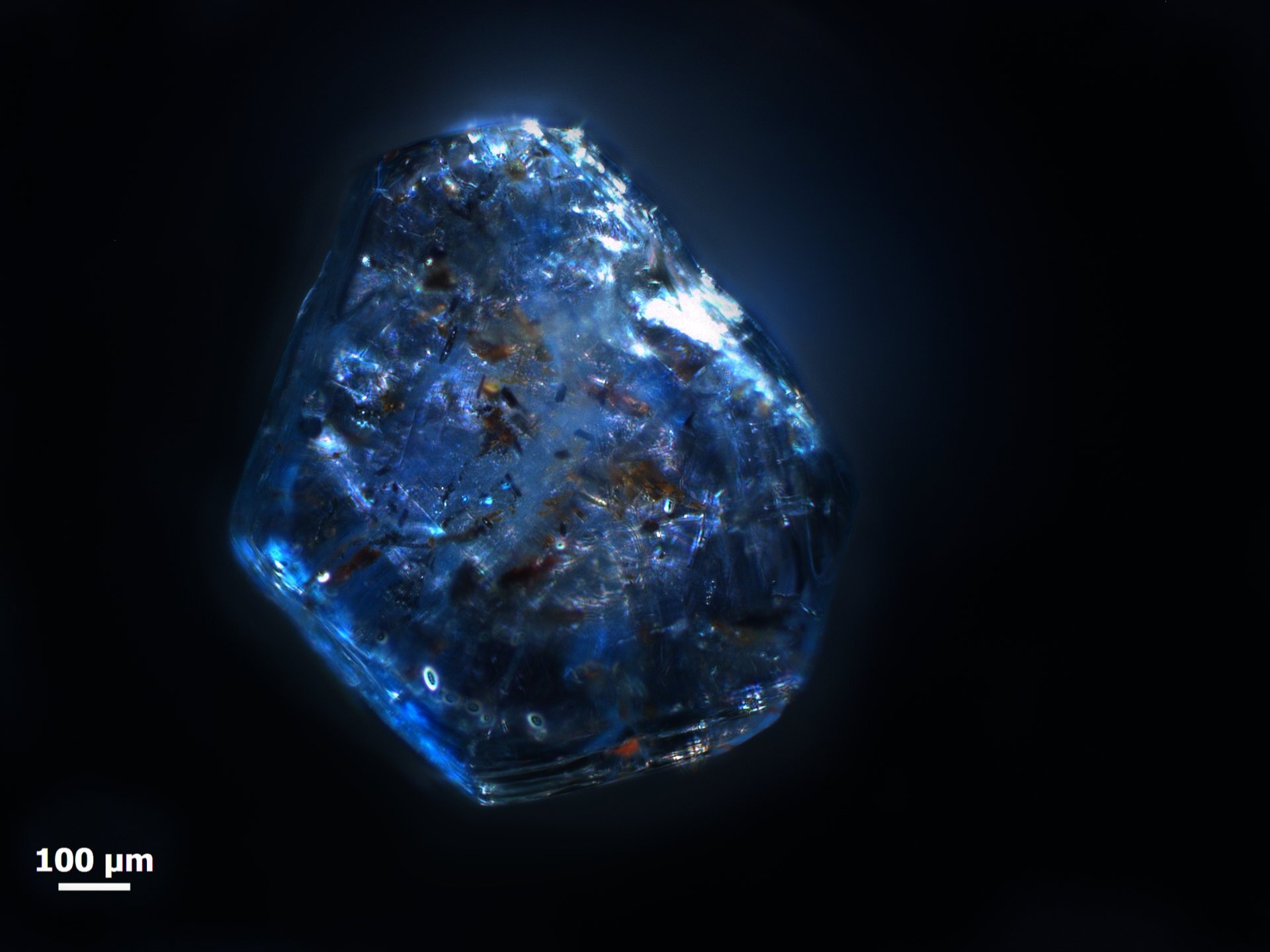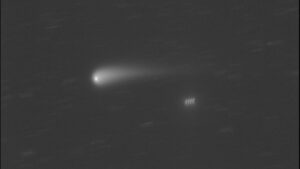Credit: Sapphire from sediment in the Kyll, a river in the western Eifel. The diameter of the crystal is approximately 0.9 mm. Credit: Sebastian Schmidt
Researchers at the University of Heidelberg are studying the formation of this characteristically blue-colored crystal in volcanic melts
Sapphires are among the most valuable gemstones, but they consist only of chemically “contaminated” aluminum oxide or corundum. Worldwide, these characteristically blue crystals are found mainly in association with silicon-poor volcanic rocks. It is widely believed that this connection is the result of sapphires originating from rocks deep in the Earth’s crust and accidentally falling to the Earth’s surface as magma rises.
Through geochemical analyses, geologists from the University of Heidelberg have shown that the millimeter-sized sapphire grains found in the Eifel (Germany) were formed in association with volcanism. The work was published in Contributions to mineralogy and petrology.
The Eifel is a volcanic region in central Europe where magma from the Earth’s mantle seeped into the upper crust over nearly 700,000 years. The melts are poor in silica but rich in sodium and potassium. Magmas of similar composition worldwide are known for their abundance of sapphire. Why this extremely rare variety of corundum occurs frequently in this type of volcanic deposit has been a mystery until now.
“One explanation is that sapphire in the Earth’s crust originates from previously clayey sediments at very high temperatures and pressures, and rising magmas simply form the elevator to the surface for the crystals,” explains Prof. Dr. Axel Schmidt, a researcher at Curtin University in Perth ( Australia), who researches isotopic geology and petrology as an emeritus professor at the Institute of Earth Sciences at the University of Heidelberg – his former home institution.
To test this assumption, the researchers examined a total of 223 Eiffel sapphires. They found some of these millimeter-sized crystals in rock samples collected from volcanic deposits in the region’s numerous quarries. However, most of the sapphires come from river deposits.
“Like gold, sapphire is very resistant to weathering compared to other minerals. Over long periods of time, the grains are washed from the rock and deposited in the rivers. Due to their high density, they are easy to separate from the lighter components of the sediment using a gold pan,” explains Sebastian Schmidt, who conducted the research as part of his master’s degree at the University of Heidelberg.
The researchers determined the age of Eiffel sapphires using the uranium-lead method on mineral inclusions in the sapphire using a secondary ion mass spectrometer, which can also identify oxygen isotope composition. The different relative contents of the light isotope O-16 and the heavy isotope O-18 provide information about the origin of the crystals like a fingerprint. Rocks in the deep crust have more O-18 than melts from the Earth’s mantle.
As the age determinations show, the Eiffel sapphires formed at the same time as the volcanism. In part, they inherited the isotopic signature of mantle melts that were contaminated by heated and partially melted rock crust at a depth of about five to seven kilometers. Other sapphires originate from contact with subterranean melts, where the melts seep into the adjacent rock and thus cause sapphires to form.
“At Eifel, both igneous and metamorphic processes, where temperature changes the original rock, play a role in sapphire crystallization,” Schmidt states.
More info:
Sebastian Schmidt et al, Petrologically controlled oxygen isotopic grading of cogenetic igneous and metamorphic sapphire from Quaternary volcanic fields in the Eifel, Germany, Contributions to mineralogy and petrology (2024). DOI: 10.1007/s00410-024-02136-x
Courtesy of Heidelberg University
Quote: Blue Miracle in Eifel: How Sapphires Formed in Volcanoes (2024, July 29), Retrieved July 30, 2024, from https://phys.org/news/2024-07-blue-miracle-eifel- sapphires-volcanoes.html
This document is subject to copyright. Except for any fair dealing for the purposes of private study or research, no part may be reproduced without written permission. The content is provided for informational purposes only.



